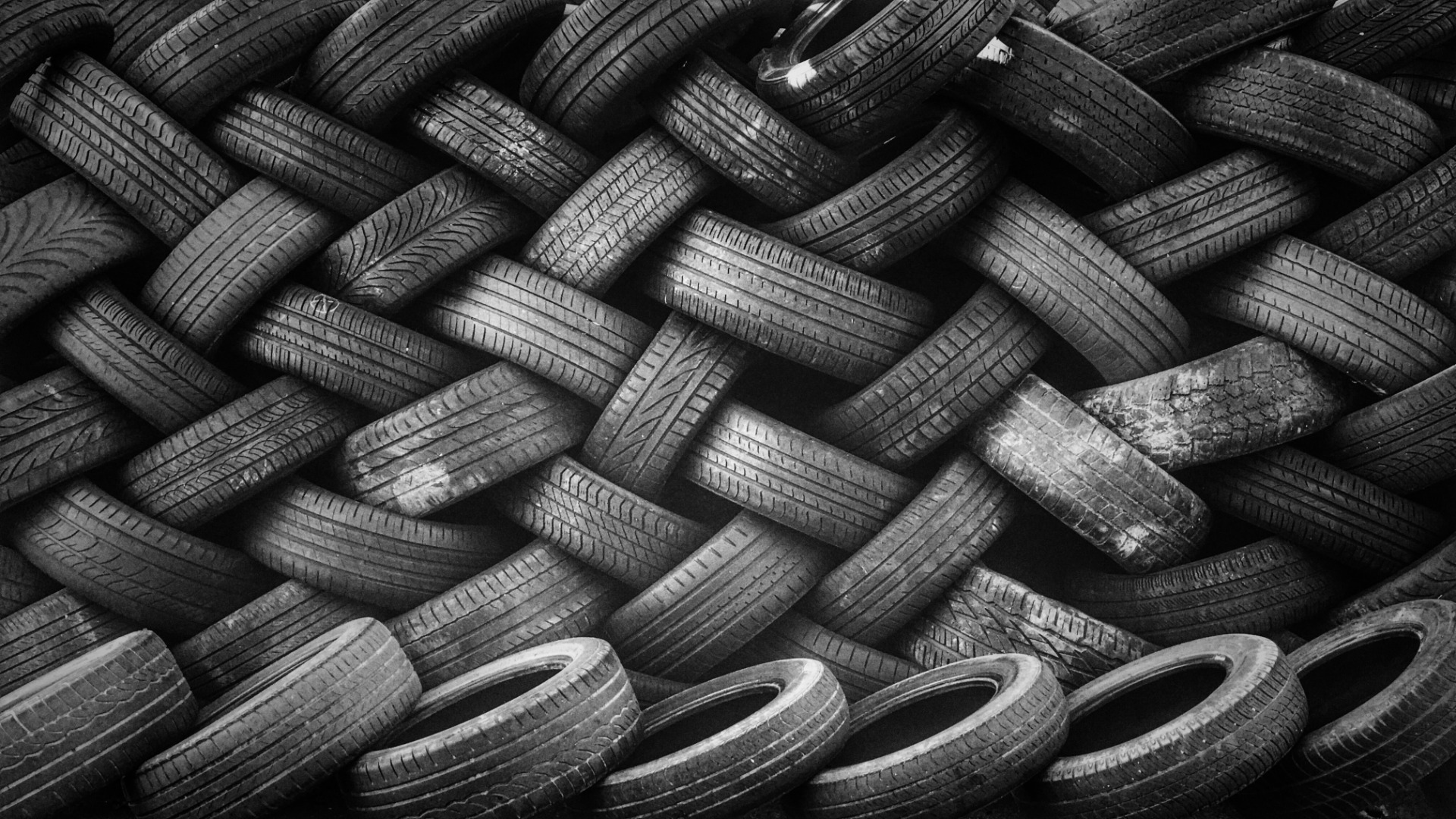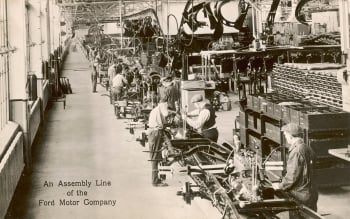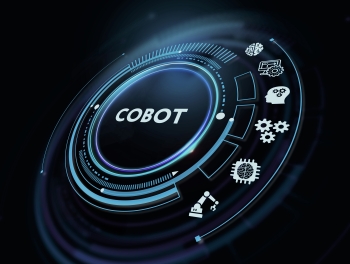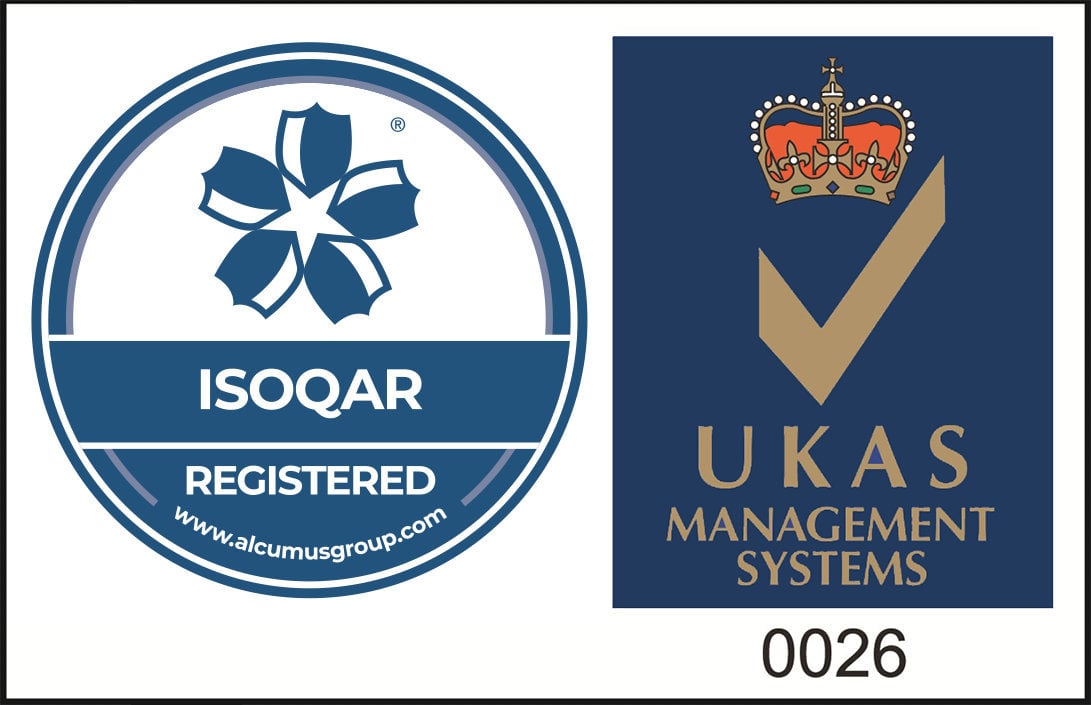

How Has Industrial Automation Gained Traction in Tyre Manufacturing?
Published: 20/01/2023
How Has Industrial Automation Gained Traction in Tyre Manufacturing?
The saying “don't reinvent the wheel” may be applicable for many things, but that is exactly what these industry giants are doing. From Goodyear developing a custom-engineered non-pneumatic airless tyre to Michelin aiming to make “tyres talk more” through their data driven services using Radio Frequency Identification (RFID) technology, innovation is driving the industry forward.
The global tyre market reached a volume of 2,268 million units in 2021 alone and is forecasted to increase to 2,665 million by 2027, a growth perpetuated by these continuous innovative advancements in automation. As demand continues to rise, manufacturers are keen to monopolise this rapidly evolving industry, have introduced artificial intelligence (AI) and embraced industrial automation throughout the entire process map.

What Are the Benefits of Automating the Tyre Industry?
Rolling Out the SMART Factory: Pirelli Introduce the Modular Integrated Robotised System (MIRS)
Having covered each of the above points, let’s take a look at how Pirelli have become a driving force behind the progression of Industry 4.0 within tyre manufacturing.
With their roots in Milan, Pirelli is the sixth largest tyre manufacturer in the world. They have nineteen sites across thirteen countries, each manufacturing their renowned high performance tyres coveted by everyday road users and Formula 1 teams alike.
Pirelli are certainly no strangers to industrial automation. In 2007, they installed a Reliance SCADA system in their Turkey plant including a Siemens SIMATIC S7-400 PLC and HMI configuration to regulate the temperatures of raw materials as they navigated the production process. Nestled in Breuberg, Germany, Pirelli also opened a tyre manufacturing facility. The plant contains the Pirelli Modular Integrated Robotised System (MIRS) which has revolutionised the manufacturing process, transforming a fourteen step process into just three, a 78% reduction in process time. A simplified preparation, semi-complete components and final curing system process has significantly optimised their workflow.
The robotic technology carries out incredibly intricately choreographed movements to complete each step. Each component including the rubber and steel is placed onto the desired size of metal drum as it rotates at a specific tension level. This consistent rotation provides a uniform result across the board. Now, you may be imagining MIRS has a fairly large structure as it is capable of completing such a wide array of tasks, however it actually requires less than four thousand feet of space, a very small amount of space in comparison with traditional tyre preparation zones. Once prepared and partially completed, another robot takes the reins to add any additional components before the tyre enters the curing stage. Bespoke moulds circle in a carousel form, capable of completely curing a tyre in just three minutes, a heavy contrast from the usual approximate fifteen minutes. Finally, once the robotics have done all the heavy lifting, it’s time for a healthy dose of human intervention. Technicians intricately inspect each tyre for any anomalies or flaws before shipping
As more unique tyre sizes and designs enter the market, mass producing them in a standard factory setting simply is not viable due to lower levels of demand. In the MIRS setup, the basics remain the same but the technology can manufacture these more unique tyres outlined in a specially written recipe. Each MIRS module is incredibly adaptive, capable of carrying out these low volume production rounds for one-off orders. Data also plays its part at the German SMART facility. Each tyre is marked with a barcode which ties it to its origin including the raw materials (also marked) and specified process parameters involved in its production. This addition makes quality control a far more accurate science.
Overall, its small structure, consistent quality control capabilities, time saving adaptability and data driven nature positions the MIRS technology at the forefront of the tyre manufacturing industry.
Test Bench Accelerates Towards a Digital Era: Michelin & Siemens Join The Highway to Innovation
Over twenty years ago, Michelin commissioned a test bench for truck tyres at their French facility. It was termed the Machine de Recherche en Comportement Poids-Lourd, promptly abbreviated to MaRCoPoLo shortly after. In 2016, as technological developments continued to progress, it was time for change and only one preferred partner came to mind. Michelin collaborated with Siemens, extremely prominent players in the field of automation and process control systems to gain consistent technical data from accurate measurements carried out on the test bed. The bench boasts a customisable axle which can be adjusted by the operator to fit varied sizes, making it accessible to their portfolio of truck tyres. As the tyres are being manufactured, prototypes are created for testing at each stage of development. They are subjected to everything from actual road testing to simulations at speeds of up to 90km/h. This testing shows how the tyre will perform in various scenarios, at polar opposite speeds, loads and different weather conditions, valuable data which helps to shape succeeding designs by the French multinational tyre manufacturer.
The key to success for this project was to integrate the new with the old, maintaining clear lines of communication between the two while keeping highly similar measurement parameters as the previous test bed. At the core of their tyre manufacturing process is the measurements of axle loads and angles, so receiving the correct output values constantly from sensors within the machine was crucial to the future success of Michelin’s truck tyre production. Siemens provided a myriad of automation equipment to achieve this goal including motion control systems for positioning, communication components to mesh with each sensor and synchronising axles. A decentralised approach was taken when installing a Simatic ET 200SP peripheral system for field level alongside a failsafe Simatic S7-1500 PLC which controls the central functions.
“This solution not only enables rapid communication with the sensors and control room, as well as the different axles’ drive systems, it also calculates correct position and speed values. Typically, it takes two milliseconds just to query parameters and calculate a new setpoint. This solution achieves much more within the same period of time: Its calculation brings in many complex factors, such as data output by the SCADA system, sensor or drives, or the influence of inertia upon the entire system.
In order to confirm the validity of the test results achieved with the new system, we chose as test objects tyres that had already been tested prior to the changeover. To our great satisfaction, any deviations from the previously obtained results were extremely small, therefore the test bench only required minimal calibration. We hadn’t counted on the much higher accuracy of the results – three to seven times higher, depending on the type of measurement. After all, the sensors and mechanical parts are still the same. Only the position control and data acquisition systems are new. It is impressive that they alone have such an enormous effect on test results.”
Jeremy Buisson, Tyre and Material Test Bench Engineering Manager at the Michelin Technology Centre, Ladoux.
Building a Safer Construction Industry: Goodyear Connect Downtime Prevention and Tyre Intelligence
In 2020, Goodyear partnered with California based SafeAI who are renowned for backing the shift to connected, autonomous construction and mining worksites. Together, the goal was to introduce data and intelligence into tyres for heavy vehicles.
"No matter the vehicle – automobile, freight truck or dump truck – tyre intelligence can help elevate safety, performance and efficiency. Through our work with SafeAI, we will not only empower site operators with greater visibility and efficiency, but also gain invaluable performance data to inform our future innovation in autonomy and heavy equipment."
Chris Helsel, Senior Vice President and Chief Technology Officer at Goodyear
The venture heavily centres on data with both parties sharing site data in relation to tyre health. This data will indicate how close to needing a replacement the vehicle is, allowing for preventative maintenance, forward thinking to prevent unplanned downtime as the replacement is sourced and fitted. Aside from a maintenance perspective, this approach also increases site safety due to less unexpected breakdowns. Using Goodyear’s TPMS sensors designed for heavy vehicles, pressure, inflation and temperature levels can be monitored and communicate the data, allowing the site to rectify any issues before they become serious. Insufficient maintenance could even result in missed project deadlines, having a catastrophic financial impact so this data is truly invaluable.
"Goodyear has been at the forefront of tire innovation for more than one hundred years. Today, we're proud to join forces to take on a new frontier: tire intelligence for autonomous heavy equipment. At SafeAI, we strongly believe in a collaborative approach to deploying autonomy in construction and mining, at scale. We have purpose-built an interoperable autonomous technology that enables us to work with industry leaders like Goodyear and set the standard for autonomous heavy equipment."
Bibrajit Halder, Founder & CEO at SafeAI
The tyre manufacturing industry is continually going through a period of innovation and change. Above, we see the manufacturing process shifting to a digital era, not only ensuring significantly enhanced quality control but also lending itself to reducing downtime due to better visibility.
As the leading multinational supplier of industrial automation parts and electrical repairs, Northern Industrial has kept the wheels of industry well oiled and turning since 1978.
If you are on the hunt for a complete automation solution for your tyre manufacturing process, we are ready and waiting to provide the integrated support you deserve in the fight against unplanned downtime.
Want to find out more?
If you'd like to learn more, click the button below and one of our helpful friendly team will be in touch. Alternately you can reach us by phone on +44 800 234 3747
Share this article





























